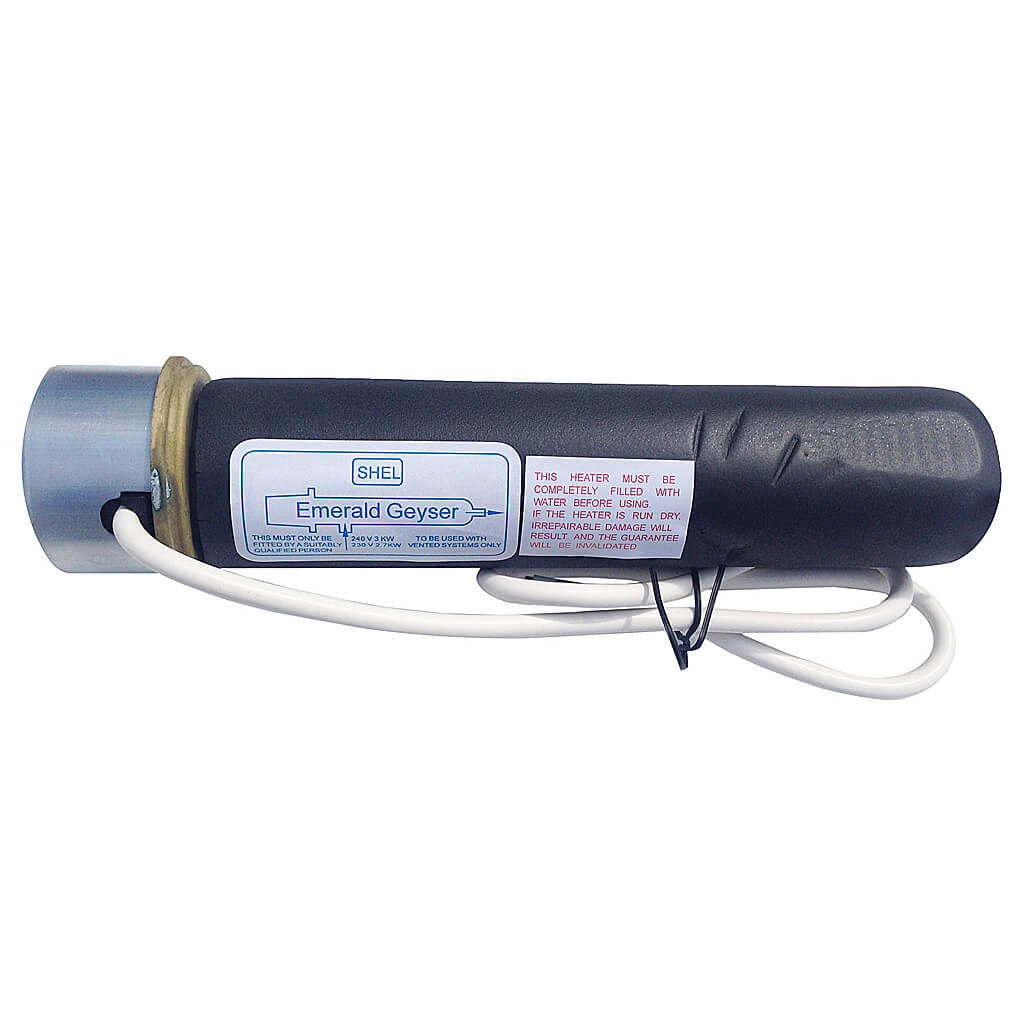It would, but have the two heaters would not do much to help the whole tank of water to heat up faster, since the top one would not often be 'on'.Yes there own thermostat. The bottom one would continue heating.
Kind Regards, John
It would, but have the two heaters would not do much to help the whole tank of water to heat up faster, since the top one would not often be 'on'.Yes there own thermostat. The bottom one would continue heating.
Water heated by the lower one would immediately rise to the top, hastening the switching off of the top one.If they switch on together with a cold tank they would each heat their surrounding water. The top one switching off slightly earilier.
As I said, I have no experience of large unvented cylinders, so I don't know the reason. It might just be a means of getting some hot water available as quickly as possible when starting from cold - since, initially, both heaters would be on and the hot water from both would rise to the top and be available for draw off. However, as I've said, if the lower one is on, the top one will not stay on for long if it has its own integral thermostat.They wouldn’t fit them for no reason.
Very unusual to use both high and low heaters at the same time, the supply is normally a single 16A [or even 13A] MCB or fuse for both heaters.Water heated by the lower one would immediately rise to the top, hastening the switching off of the top one.
As I said, I have no experience of large unvented cylinders, so I don't know the reason. It might just be a means of getting some hot water available as quickly as possible when starting from cold - since, initially, both heaters would be on and the hot water from both would rise to the top and be available for draw off. However, as I've said, if the lower one is on, the top one will not stay on for long if it has its own integral thermostat.
With dual-immersion conventional (vented) set ups, the top one is normally used when one just wants to heat a relatively small amount of water, rather than the whole tank - although, as described above, if both were switched on together, that small amount of water would heat up to temp even quicker (hopefully roughly twice as fast!).
Kind Regards, John


This thread is, of course, not actually about dual immersions - it was an aside from Andy which started the recent exchanges.
Sorry I've only seen the second page.
You are again describing the conventional system, such as i have described. As I have just written, Andy seemed to be implying that things were different with large unvented cylinders - and, as I said, I have no experience thereof, and therefore don't know if that's the case.Very unusual to use both high and low heaters at the same time, the supply is normally a single 16A [or even 13A] MCB or fuse for both heaters.
Ah, if I understand, that's not heating the water in the cylinder directly at all, As you say, it's heating the water external to the cylinder - so, when it enters the cylinder, it will, if course, rise to the top and therefore the water in the cylinder will 'get hot' (not 'be heated') 'from top down'.Sorry Willis - and yes external heats from top down so longer you leave it on the more hot water you get.
Indeed, and I was one of the people who mentioned that. However, it's not universal - I've seen immersions that have been powered via BS1363 plugs/sockets for years without any obvious signs of thermal damage.Others have already mentioned that 13A plugs will not sustain 3KW for extended periods and I will confirm that with the greatest of ease. It's not just due to the fuse rating but yes 13A plugs do fail with sustained 3KW loads.
... but even better (and, as is the 'usual') not to use a plug/socket at all. Even if, as per the OP, there is a desire to be able to switch supply from the main installation to a genny, that can be done (hard-wired) with a changeover switch.Much better to use a 15A plug/socket or even a 16A if you can.

Kettles are water heaters?OK looked at the beginning of the thread now...
Others have already mentioned that 13A plugs will not sustain 3KW for extended periods and I will confirm that with the greatest of ease. It's not just due to the fuse rating but yes 13A plugs do fail with sustained 3KW loads.
Much better to use a 15A plug/socket or even a 16A if you can.
All of this aside I recall discussions in class when I did my 16th that plug & socket are not permitted for water heaters but I've not looked it up in the last 10 years.
If you need to find a tradesperson to get your job done, please try our local search below, or if you are doing it yourself you can find suppliers local to you.
Select the supplier or trade you require, enter your location to begin your search.
Are you a trade or supplier? You can create your listing free at DIYnot Local
